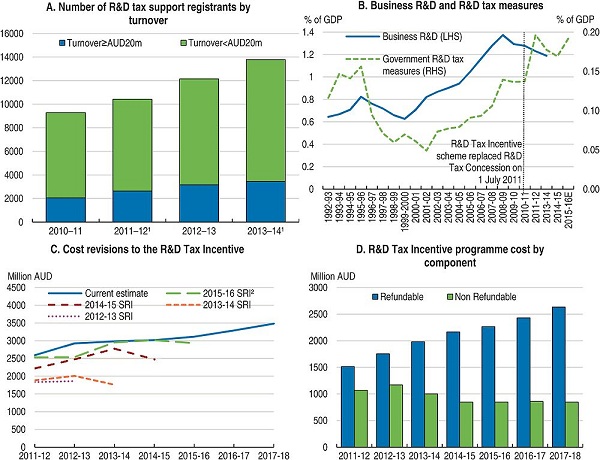Even
though many U.S. companies are eligible for the R&D decrease, they never
cash in of it. The explanations are often multiple: either they aren’t really
conscious of this possibility, unsure whether their organization qualifies, or
just don’t bother to use. As a result, they could be missing out on many
thousands of dollars. So what exactly is that the R&D tax credit?
The R&D Tax Credit: Overview
The
Research & Experimentation Tax Creditor R&D Tax incentive to the mix is a general
business tax credit under Internal Revenue Code section 41 for companies that
incur research and development (R&D) costs in the United States.
Who Is Eligible
People
often think that only research labs or large corporations qualify for this
credit, but this isn’t exactly true. Businesses of all sizes may apply if they
perform research or experimental development provided they will present
evidence to support their claims.
Among
other misconceptions is that the concept you've got to introduce a breakthrough
technology to qualify, or a minimum of achieve success in your research. Well,
neither is really true. It doesn’t really matter if your research fails, or
leads to only minor improvements. It’s the trouble that gets rewarded.
What Expenses are often claimed?
According
to the U.S. IRS agency, companies can claim credit nearly for all expenditures
associated with the event or optimization of a product. More specifically, they
include:
1) Wages paid to the workers who conducted the R&D activities.
2) Supply and material costs associated with the R&D, including prototype
models.
3) Contract costs — if a third-party contractor was hired to conduct research for
your company.
4) Computer leasing — if you've got used cloud services to perform research or
experiments.
 |
| R&D Tax Incentive To The Mix |
What Activities Qualify?
For
a business to qualify for the R&D decrease, its activity must satisfy the
standards listed below. Seek to get new information and eliminate technical
uncertainty. In other words, the research should reveal new knowledge about
development or improvement. For instance, QA activities or marketing research
won't qualify here.
· Be technological in nature and supported the hard sciences (from physics and chemistry to engineering and computer science).
· Have a professional purpose, like creating or improving an existing product or process. Here are more recommendations on the way to prepare documentation for a tax return.
· Collect records to demonstrate your R&D activities (preferably at the time once they are carried out). This documentation might include lab reports, patent claims, experiment descriptions, protocols and logs, etc. Relevant internal emails could even be useful here.
· Implement a web time sheet to facilitate project time tracking. Since wages constitute the most important a part of most tax claims, it might be an honest idea to pay extra attention to the present sort of documentation. Standard payrolls aren't enough: you'll got to demonstrate how your labour costs are connected to the R&D activities. That’s where an in depth breakdown of working hours by projects could are available really handy.
· Keep your contract agreements. If you appoint subcontractors to perform the R&D for you, contract papers are going to be necessary to acknowledge your rights to the property. Other good samples of supporting documentation are invoices and 1099 forms.
· Structure your ledger in order that you'll easily find supply costs related to the R&D. Ideally, this information should be protected by relevant invoices.
· Be technological in nature and supported the hard sciences (from physics and chemistry to engineering and computer science).
· Have a professional purpose, like creating or improving an existing product or process. Here are more recommendations on the way to prepare documentation for a tax return.
· Collect records to demonstrate your R&D activities (preferably at the time once they are carried out). This documentation might include lab reports, patent claims, experiment descriptions, protocols and logs, etc. Relevant internal emails could even be useful here.
· Implement a web time sheet to facilitate project time tracking. Since wages constitute the most important a part of most tax claims, it might be an honest idea to pay extra attention to the present sort of documentation. Standard payrolls aren't enough: you'll got to demonstrate how your labour costs are connected to the R&D activities. That’s where an in depth breakdown of working hours by projects could are available really handy.
· Keep your contract agreements. If you appoint subcontractors to perform the R&D for you, contract papers are going to be necessary to acknowledge your rights to the property. Other good samples of supporting documentation are invoices and 1099 forms.
· Structure your ledger in order that you'll easily find supply costs related to the R&D. Ideally, this information should be protected by relevant invoices.
No comments:
Post a Comment